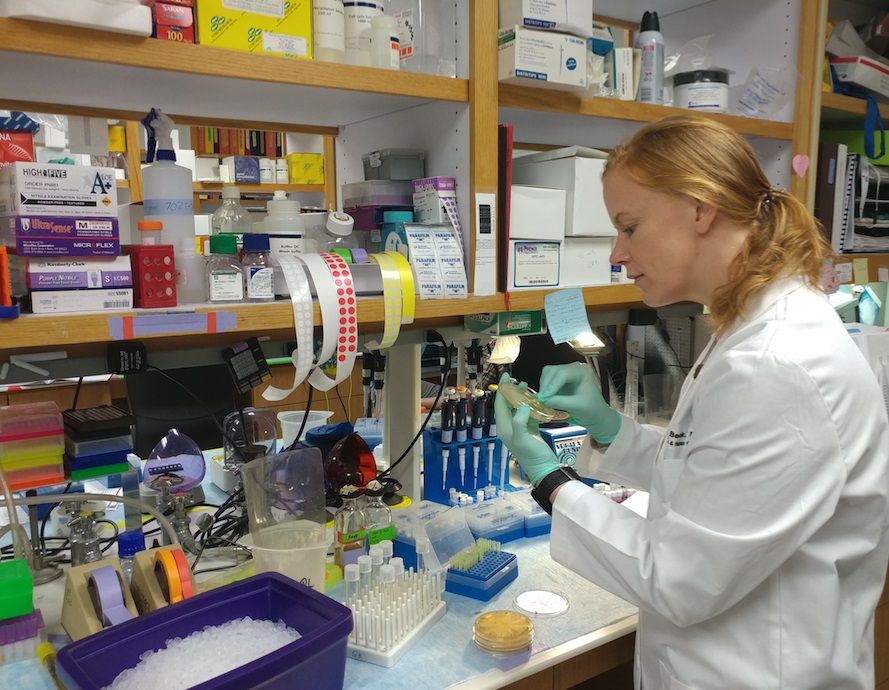Genomic Research Breakthrough Advances Sustainable Development Goals for Health and Equality
A landmark international study has produced near-complete genome sequences from 65 individuals of diverse ancestries, significantly advancing the fields of human biology and precision medicine. The findings, co-led by The Jackson Laboratory (JAX) and UConn Health, make a substantial contribution to achieving key United Nations Sustainable Development Goals (SDGs), particularly SDG 3 (Good Health and Well-being) and SDG 10 (Reduced Inequalities).
Addressing Health Disparities and Promoting Well-being (SDG 3 & SDG 10)
This research directly confronts historical inequities in genomic data, which has long excluded a majority of the world’s population. By creating a more inclusive and comprehensive genetic reference, the study lays the groundwork for more equitable healthcare outcomes globally.
Closing the Diversity Gap in Genomic Research
The study expands upon previous pangenome efforts by incorporating a wider range of ancestries, thereby addressing a critical shortfall in genomic science. This initiative is fundamental to SDG 10, as it ensures that the benefits of genetic research are not confined to historically overrepresented populations.
- The project successfully closed 92% of the remaining data gaps from earlier pangenome drafts.
- It provides a new gold standard for genome sequencing that captures essential human variation previously overlooked.
- By including diverse genomes, the research helps explain why disease risk and manifestation can differ across populations.
Implications for Global Health and Precision Medicine
The detailed mapping of complex genetic regions, known as structural variants, has profound implications for SDG 3. Understanding these variants is crucial for diagnosing and treating a wide array of conditions, moving science closer to a future of personalized medicine for all.
- Disease Susceptibility: The study resolved intricate genomic regions linked to specific diseases, including the Major Histocompatibility Complex (MHC), which is associated with cancer, autoimmune syndromes, and over 100 other diseases.
- Therapeutic Targets: Researchers fully sequenced the SMN1 and SMN2 gene region, the target for therapies treating spinal muscular atrophy, and the NBPF8 gene, involved in neurogenetic disorders.
- Understanding Human Biology: The complete sequencing of the amylase gene cluster offers insights into metabolic processes like starch digestion, while the resolution of 1,246 human centromeres illuminates the mechanics of cell division.
Fostering Innovation and Partnerships (SDG 9 & SDG 17)
The success of this project was underpinned by significant technological innovation and a robust global partnership, highlighting the importance of SDG 9 (Industry, Innovation, and Infrastructure) and SDG 17 (Partnerships for the Goals).
Technological and Scientific Infrastructure
The research was made possible by new sequencing technologies and advanced computational software capable of interpreting the most complex and repetitive regions of human DNA. These tools represent a vital upgrade to the world’s scientific infrastructure.
- Advanced sequencing techniques combined long and short DNA reads to achieve unprecedented accuracy.
- Specialized software developed at JAX enabled the precise identification and cataloguing of structural variants, including 1,852 previously intractable complex variants.
- The study catalogued 12,919 mobile DNA elements, or “jumping genes,” providing new insights into genomic instability and gene regulation.
A Model for Global Collaboration
This milestone was achieved through the Human Genome Structural Variation Consortium, a collaboration involving more than 20 leading institutions worldwide. This partnership exemplifies the spirit of SDG 17, demonstrating how shared expertise and resources can accelerate scientific progress for the benefit of humanity.
SDGs Addressed in the Article
The article on advancements in human genome sequencing touches upon several Sustainable Development Goals (SDGs), primarily focusing on health, equality, and collaboration.
-
SDG 3: Good Health and Well-being
The core of the article is about a scientific breakthrough that has profound implications for human health. It discusses decoding DNA variations that “influence everything from digestion and immune response to muscle control” and could “explain why certain diseases strike some populations harder than others.” The research aims to advance “precision medicine” and provides insights into conditions like cancer, autoimmune syndromes, spinal muscular atrophy, and neurogenetic diseases, all of which are central to ensuring healthy lives and promoting well-being.
-
SDG 10: Reduced Inequalities
A significant theme in the article is the effort to correct historical biases in genetic research. It explicitly states that “for too long, our genetic references have excluded much of the world’s population” and that the new work aims to “ensure that future discoveries benefit all populations—not just those historically overrepresented in research.” By creating a more inclusive genetic reference from “diverse ancestries,” the study directly addresses inequalities in health outcomes and access to the benefits of scientific progress.
-
SDG 17: Partnerships for the Goals
The article highlights that the scientific achievement was not an isolated effort. It was conducted by an “international team of scientists” in “collaboration with more than 20 institutions” under the umbrella of the “Human Genome Structural Variation Consortium.” This demonstrates a multi-stakeholder partnership that mobilizes and shares knowledge, technology, and expertise to achieve a common scientific goal, which is the essence of SDG 17.
Specific SDG Targets Identified
Based on the article’s content, the following specific SDG targets can be identified:
-
Target 3.4: Reduce by one-third premature mortality from non-communicable diseases through prevention and treatment and promote mental health and well-being.
The research contributes to this target by providing a deeper understanding of the genetic basis of non-communicable diseases. The article mentions resolving the Major Histocompatibility Complex, which is “linked to cancer, autoimmune syndromes, and more than 100 other diseases,” and sequencing the gene region for spinal muscular atrophy and another gene “involved in developmental and neurogenetic disease.” This foundational knowledge is a critical step toward developing better prevention and treatment strategies.
-
Target 10.2: By 2030, empower and promote the social, economic and political inclusion of all, irrespective of… race, ethnicity, origin… or other status.
The study directly promotes scientific and health inclusion. By sequencing genomes from “65 individuals across diverse ancestries,” the project works to correct the exclusion of vast populations from genomic data. The stated goal is to create a more “inclusive vision of human biology” so that the benefits of precision medicine are not limited to certain ethnic groups, thereby reducing inequalities of outcome in healthcare.
-
Target 17.6: Enhance North-South, South-South and triangular regional and international cooperation on and access to science, technology and innovation and enhance knowledge sharing.
The article exemplifies this target by describing the project as a collaboration among an “international team of scientists” from “more than 20 institutions.” Furthermore, the team is “sharing an open-source playbook that any scientists sequencing genomes to this level can use in their laboratories,” which is a direct form of enhancing access to technology and knowledge sharing on an international scale.
Indicators for Measuring Progress
The article mentions or implies several indicators that can be used to measure progress towards the identified targets:
-
Indicators for Target 3.4:
The article provides quantifiable data on the expansion of knowledge. An implied indicator is the number of previously intractable genetic regions resolved. The article specifies that the research untangled “1,852 previously intractable complex structural variants” and fully resolved complex regions like the one for spinal muscular atrophy (SMN1/SMN2) and the Major Histocompatibility Complex.
-
Indicators for Target 10.2:
Progress can be measured by the diversity and completeness of genomic references. The article provides clear metrics: the expansion from a single genome to a pangenome of 47 individuals, and now to “complete sequences from 65 individuals across diverse ancestries.” Another key indicator mentioned is the percentage of remaining data gaps closed in the human genome, which the study achieved at a rate of “92%.”
-
Indicators for Target 17.6:
An indicator for partnership and knowledge sharing is the number of institutions involved in a collaborative research project, which the article states is “more than 20 institutions.” Another indicator is the creation and dissemination of open-access tools and resources; the article refers to the “open-source playbook” and the “variant-finding software” made available to other scientists.
Summary of SDGs, Targets, and Indicators
| SDGs | Targets | Indicators (Mentioned or Implied in the Article) |
|---|---|---|
| SDG 3: Good Health and Well-being | Target 3.4: Reduce premature mortality from non-communicable diseases through prevention and treatment. |
|
| SDG 10: Reduced Inequalities | Target 10.2: Promote the inclusion of all, irrespective of race or ethnicity. |
|
| SDG 17: Partnerships for the Goals | Target 17.6: Enhance international cooperation on and access to science, technology, and innovation. |
|
Source: today.uconn.edu







